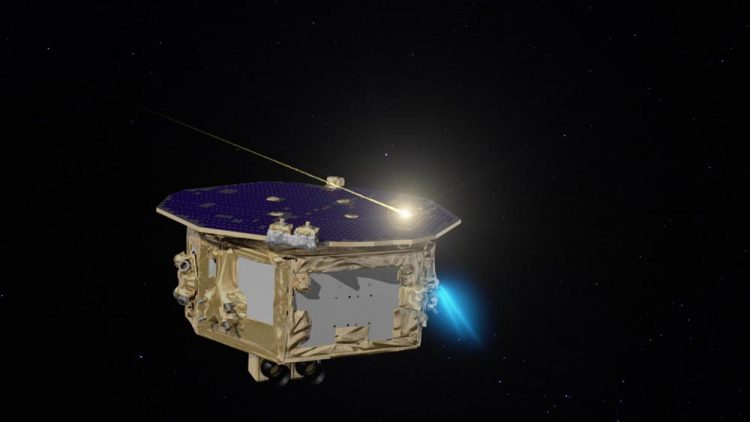How LISA pathfinder detected dozens of 'comet crumbs'

Illustration of LISA Pathfinder Credit: NASA's Goddard Space Flight Center
A team of NASA scientists leveraged LISA Pathfinder's record-setting sensitivity for a different purpose much closer to home — mapping microscopic dust shed by comets and asteroids.
Most of these particles, known as micrometeroids, have masses measured in micrograms, similar to a small grain of sand.
But at speeds reaching 40,000 mph (64,000 kph), even micrometeoroids pack a punch.
The NASA team, led by Ira Thorpe at NASA's Goddard Space Flight Center in Greenbelt, Maryland, detected 54 impacts during the mission, which lasted from 2015 to 2017.
Modeling the strikes allowed the researchers to determine what kinds of objects shed the dust.
The findings are broadly consistent with existing ideas of what generates micrometeroids found near Earth. The dusty culprits are mostly short-period comets whose orbits are determined by Jupiter.
Comets with longer periods, like Halley's comet, also contributed dust that LISA Pathfinder sensed.
The new measurements could help refine dust models used by researchers in a variety of studies, from understanding the physics of planet formation to estimating impact risks for current and future spacecraft.
Media Contact
All latest news from the category: Physics and Astronomy
This area deals with the fundamental laws and building blocks of nature and how they interact, the properties and the behavior of matter, and research into space and time and their structures.
innovations-report provides in-depth reports and articles on subjects such as astrophysics, laser technologies, nuclear, quantum, particle and solid-state physics, nanotechnologies, planetary research and findings (Mars, Venus) and developments related to the Hubble Telescope.
Newest articles

Trotting robots reveal emergence of animal gait transitions
A four-legged robot trained with machine learning by EPFL researchers has learned to avoid falls by spontaneously switching between walking, trotting, and pronking – a milestone for roboticists as well…

Innovation promises to prevent power pole-top fires
Engineers in Australia have found a new way to make power-pole insulators resistant to fire and electrical sparking, promising to prevent dangerous pole-top fires and reduce blackouts. Pole-top fires pose…

Possible alternative to antibiotics produced by bacteria
Antibacterial substance from staphylococci discovered with new mechanism of action against natural competitors. Many bacteria produce substances to gain an advantage over competitors in their highly competitive natural environment. Researchers…





















